Brioche dough has long been a beloved choice for those seeking a buttery, tender bread perfect for both sweet and savory dishes. This classic French bread combines the characteristics of both bread and pastry, making it an indulgent and versatile option for your baking endeavors. From sumptuous French toast to satisfying sandwiches and elegant desserts, brioche bread has a wealth of diverse applications that never fail to impress
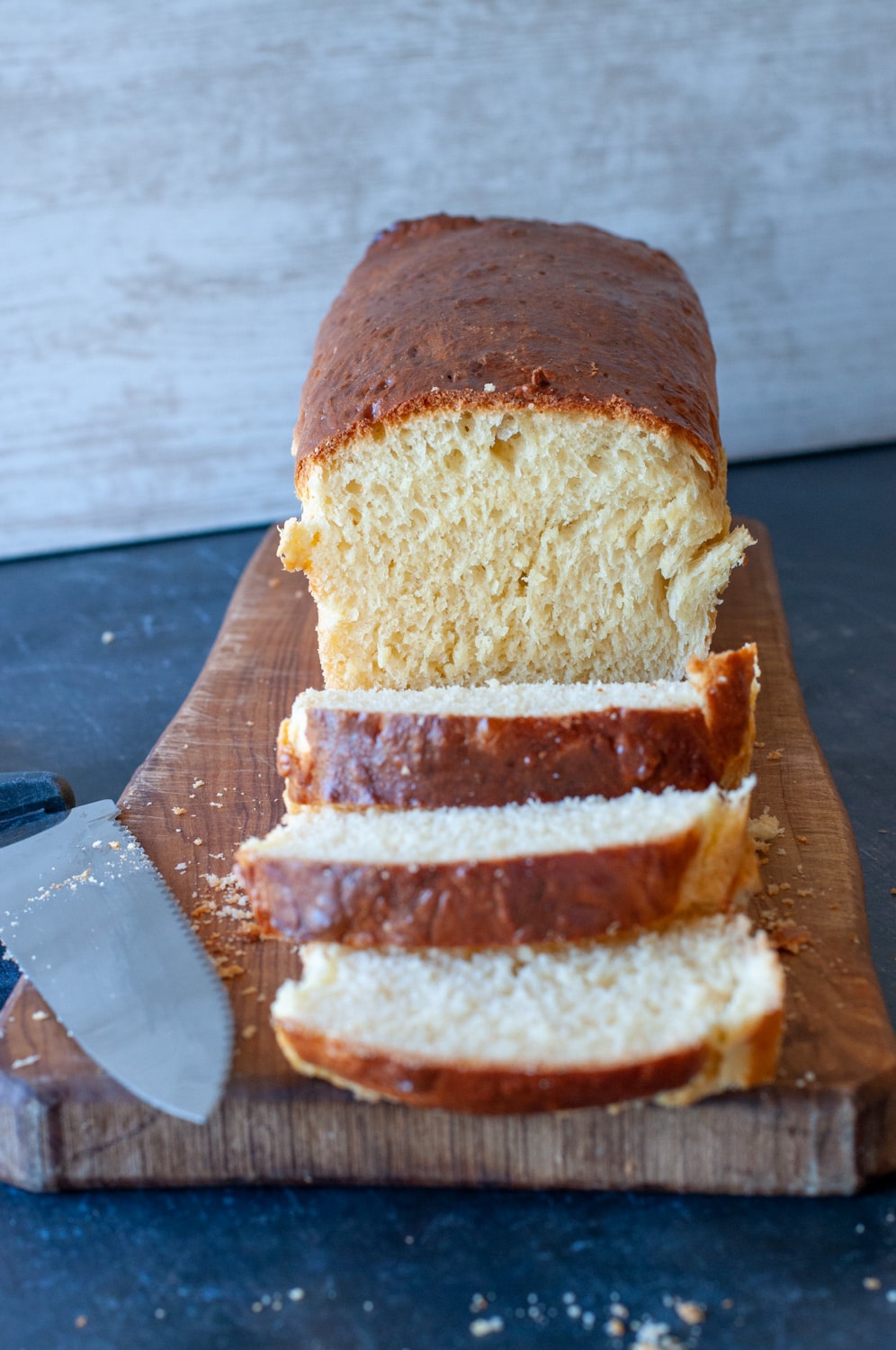
Jump to:
The key to creating the perfect brioche dough lies in understanding the role of its enriching ingredients and mastering each step of the process.
Carefully combining and proofing yeast with milk and egg enriches the dough, providing a rich, delicate crumb, while the generous addition of butter creates a luxurious, tender texture.
With practice, you can learn the art of shaping and baking brioche to perfection, creating an array of delightful variations and toppings to suit any occasion.
You can make brioche loaf to cut and serve in slices with sweet and savory topping.
Although, this brioche recipe is also used as the base for making many bread recipes like brioche cinnamon rolls, brioche sausage rolls, Brioche buns Maritozzi or savory dinner rolls or cheese bread Crescia
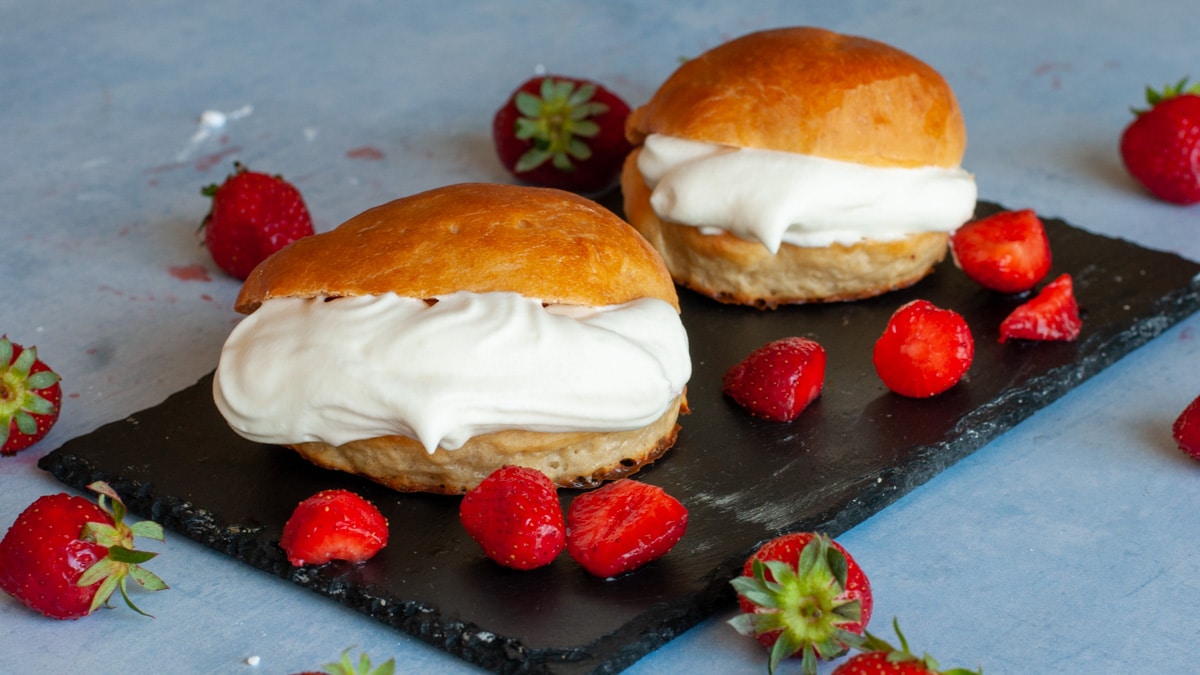
Difference between bread, pizza, brioche and cake dough
Bread, pizza, brioche, and cake dough are very different in taste, texture, and ingredients.
Here are their main characteristics:
- Bread and pizza dough are simply made with flour, yeast, and water. Also called lean doughs, they have a crunchy crust and a soft center.
- Brioche dough is made with flour and a mix of milk, eggs, butter, and sugar. It is also called enriched dough, and its texture is softer and buttery.
- Cakes have baking powder as their raising agent, not yeast, so the preparation is completely different.
When yeast is used as the raising agent, the dough needs to rest to rise and is baked once it has risen.
Instead, if baking powder is used, the cake has to be put in the oven immediately once the batter has been mixed. Delaying may result in reducing its rising power.
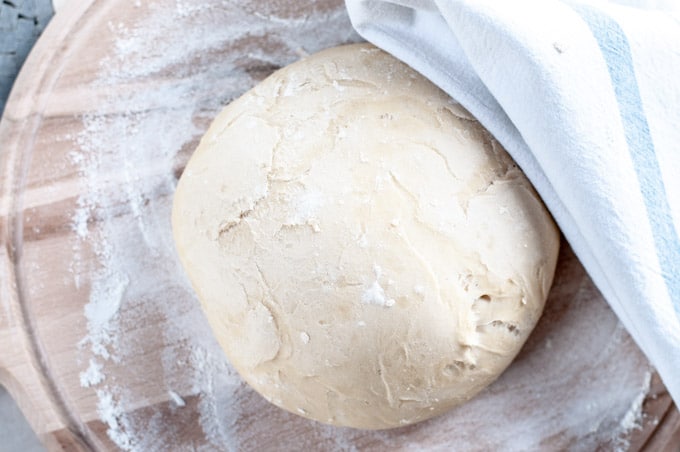
Ingredients
The basic ingredients for a brioche dough will normally constitute:
- Active dry yeast or fresh yeast
- Wet Ingredients: unsalted butter at room temperature, large eggs, and warm milk
- Dry Ingredients: flour, salt, sugar

Opting for all-purpose flour will yield a lighter brioche, while bread flour will yield a slightly more robust texture.
Use large eggs and high-quality protein-rich all-purpose flour or flour type 0
The protein present in both these ingredients will add to the dough's gluten content, allowing it to achieve the desired elasticity and structure.
Sugar or honey is often added even to savory dough as it helps to activate the yeast.

For a nice shining color, the top of the dough is brushed with an egg wash made with egg and milk
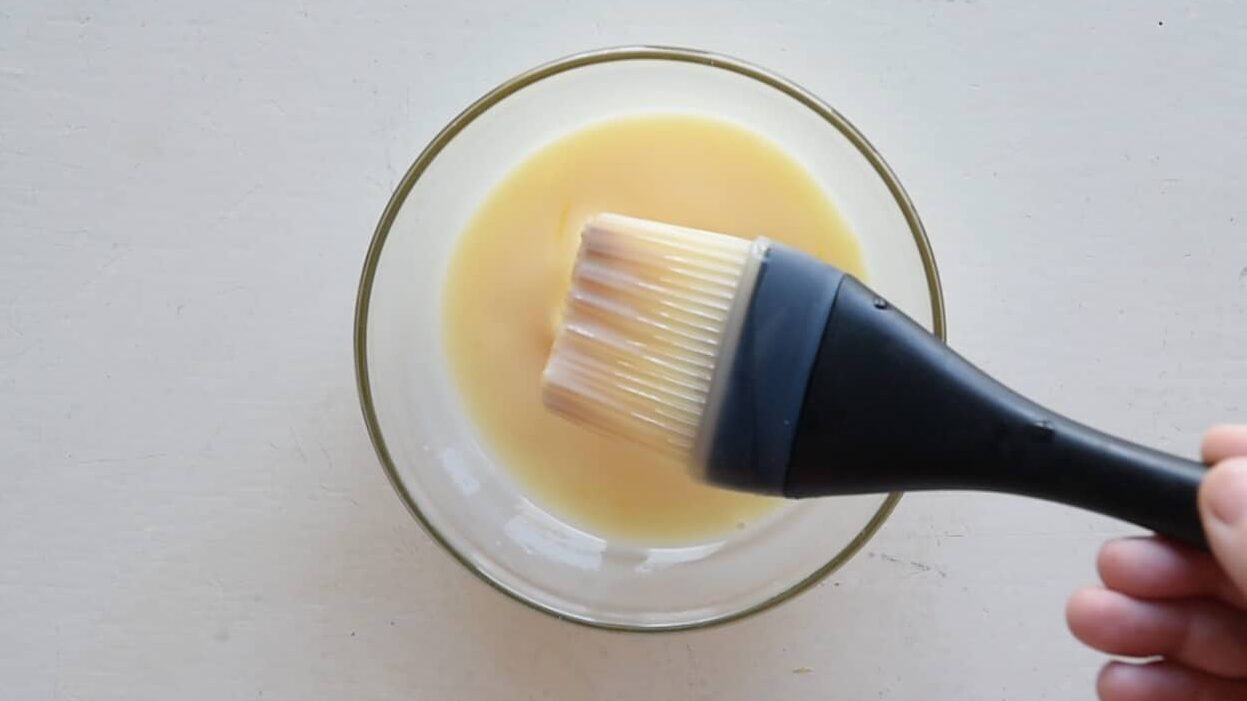
Instructions
You can make the dough either in the bread machine, with a stand mixer or by hand.
Here are the 3 methodologies:
Using the bread machine
Making the dough in the bread machine is certainly much easier.
You only have to mix the wet ingredients and the dry ingredients and pour them in the machine.
The bread machine will do the rest.
- You don't have to worry about activating the yeast, as the bread machine will warm up the basket achieving the best temperature for the yeast to activate.
- It will mix the dough for the right amount of time and let it rest at a perfectly gaged warm temperature.
- The other great advantage of the bread machine is the timer.
- If you want to bake your brioche or bread rolls in the morning, you can pour the ingredients into the machine and set the timer for the dough to be ready the next morning.
- You only have to shape it and bake it if you don’t want to bake it in the bread machine basket.
If you are an earlier riser like me, you can have your freshly baked rolls before everyone is up.
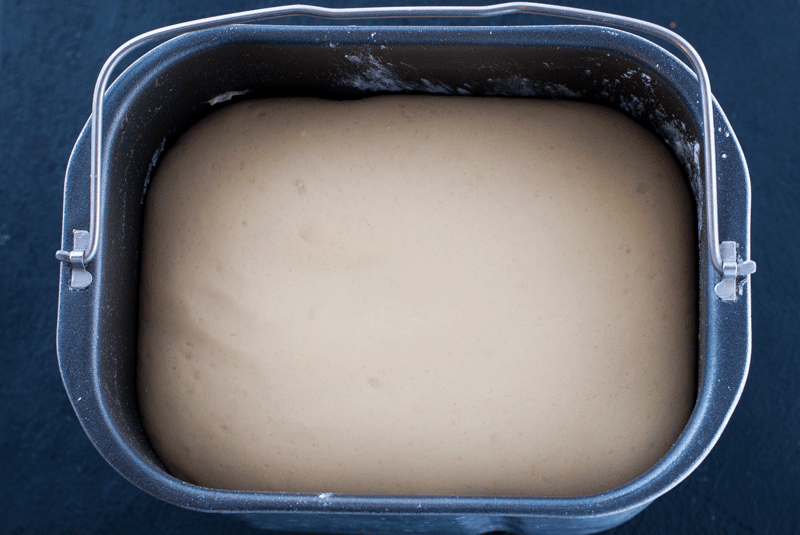
Without a bread machine
If you are making the dough without the bread machine, there are a few things you will need to watch out to make sure your brioche dough will come out perfect.
- You need to activate the yeast with lukewarm water, not colder, not warmer. To make sure the yeast is active, let it rest for 10 minutes, and you will see foam forming on the surface. If the yeast is active, you can proceed. The water you used to activate the yeast should be subtracted from the liquid you need to add for the wet ingredients.
- Mix all the wet ingredients first: if you need to melt the butter, don't add the eggs while the butter is still warm; otherwise, the eggs will cook in hot melted butter.
- Add some warm milk or water (depending on the recipe)
- Mix all the dry ingredients together before you add the wet ingredients. Make sure the sugar and the salt are well distributed within the flour
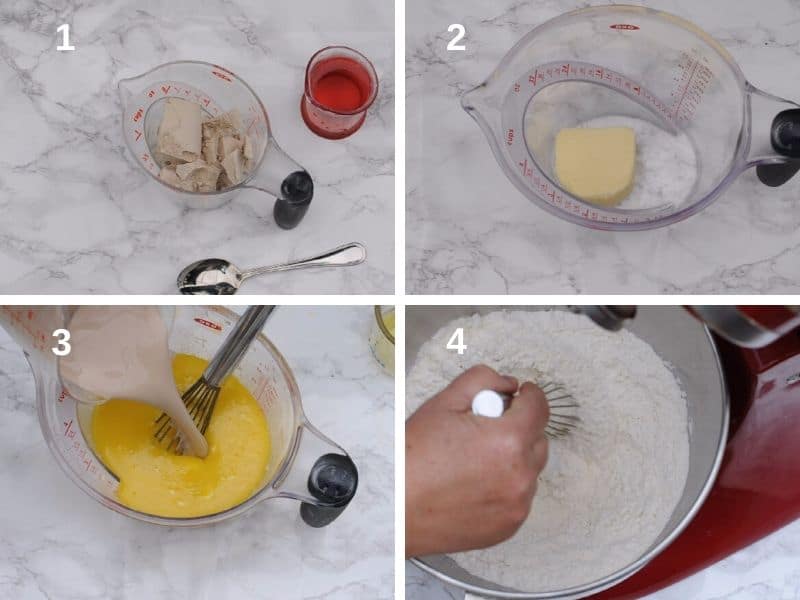
Using an electric mixer
- If you use an electric mixer, mix the dry and the activated yeast mixture
- Add the wet ingredients milk, and eggs; last, add the butter (at room temperature) gradually
- Make sure the dough is compact and amalgamated.
- Mix it until the dough becomes a ball that comes away easily from the side of the bowl.
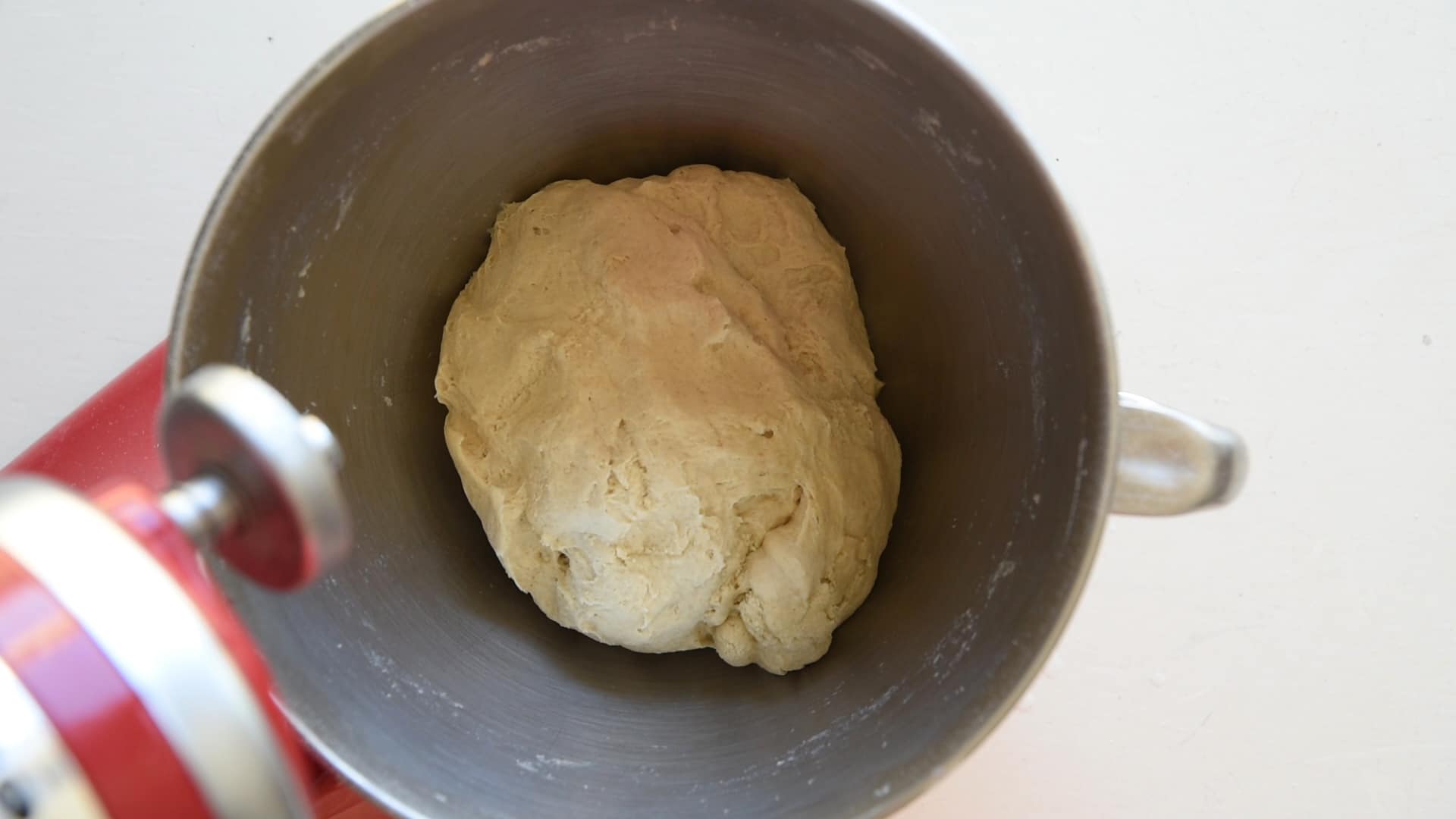
Mixing it by hand
- Pour the dry ingredients on a flat surface and make a ‘well’ in the center of the flour mix.
- Slowly pour the wet ingredients into the ‘well’ of the flour and mix it with the wet ingredients gradually, using your fingers.
- Knead the dough until it is smooth and compact.
Hint: you can perform the windowpane test to check if the dough is properly developed. The test involves stretching a small piece of dough until it becomes thin and translucent. If it tears easily, continue kneading until it passes the test.
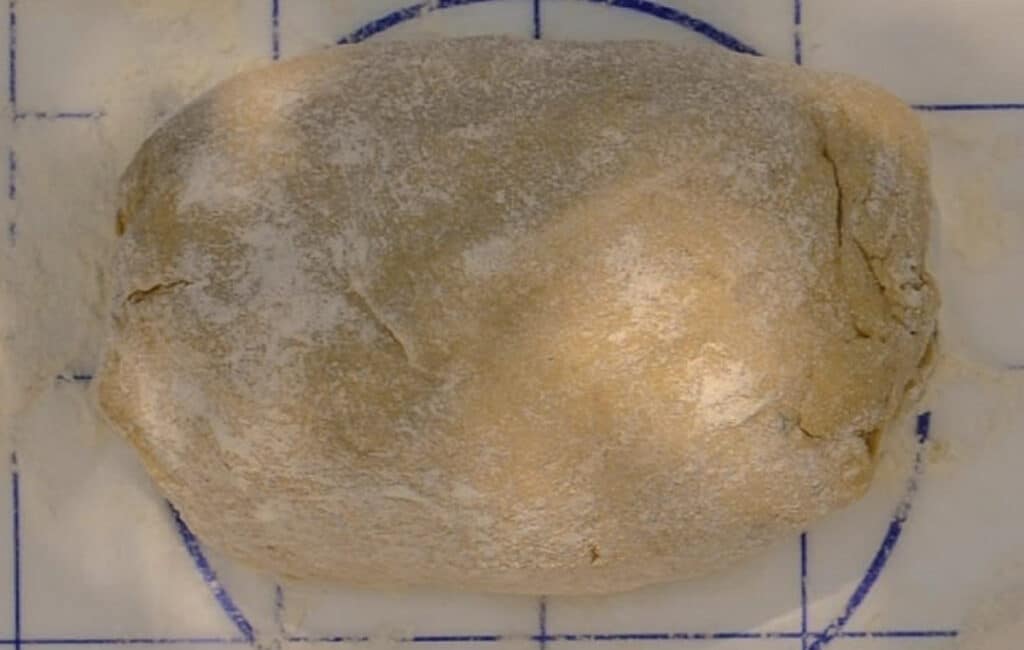
Fermentation and Proofing
In the process of making brioche dough, fermentation, and proofing are crucial steps to ensure the desired texture and flavor.
Fermentation allows the yeast to produce carbon dioxide, which helps the dough rise and develop its structure.
Proofing, on the other hand, is the final rise that occurs after shaping the dough and before baking.
Hint: if you made the dough in a bread machine, the fermentation is already done.
- Cover your brioche dough in a greased bowl with a clean towel or plastic wrap.
- Allow the dough to rise in a warm place, typically around 75-80°F (24-27°C), to ensure optimal yeast activity.
- This first rise, known as the first proof, can take anywhere from 1 to 2 hours, depending on the specific recipe and climate.
- Once the dough has roughly doubled in size during the first proof, you can proceed with shaping it according to your desired form.
After shaping, the second rise, or proofing, takes place. At this stage, you have a few options for proofing methods.
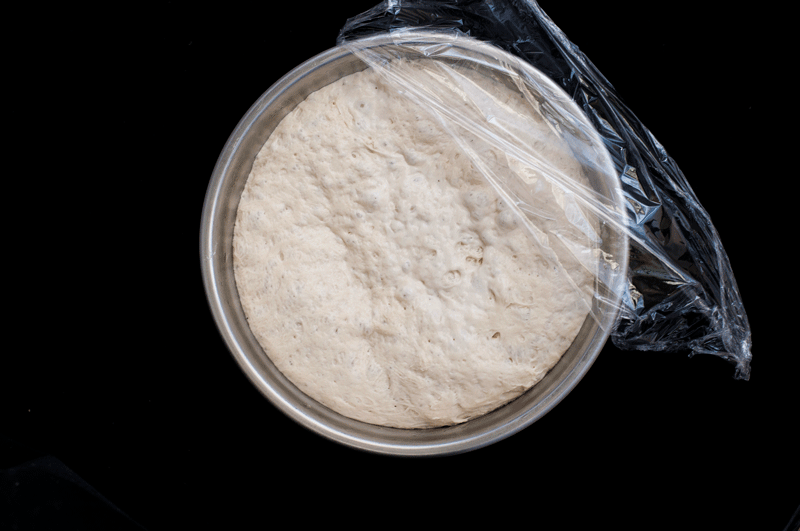
Proofing overnight
Some bakers recommend an overnight proof in the refrigerator while others prefer a shorter proof at room temperature.
Chilling the dough overnight in the refrigerator not only slows down the fermentation process but also enhances the flavor of your brioche.
The slower fermentation allows for a more complex flavor to develop.
Another advantage of this method is that the cold dough is easier to work with when shaping.
Quick proofing
If you prefer a quicker proof, leave the shaped dough covered in a warm place for another 1 to 2 hours or until it has nearly doubled in size.
Keep in mind that proofing times may vary depending on the climate and room temperature.
Remember to carefully monitor your dough's rise during fermentation and proofing, as over-proofing can lead to a less desirable texture and flavor.
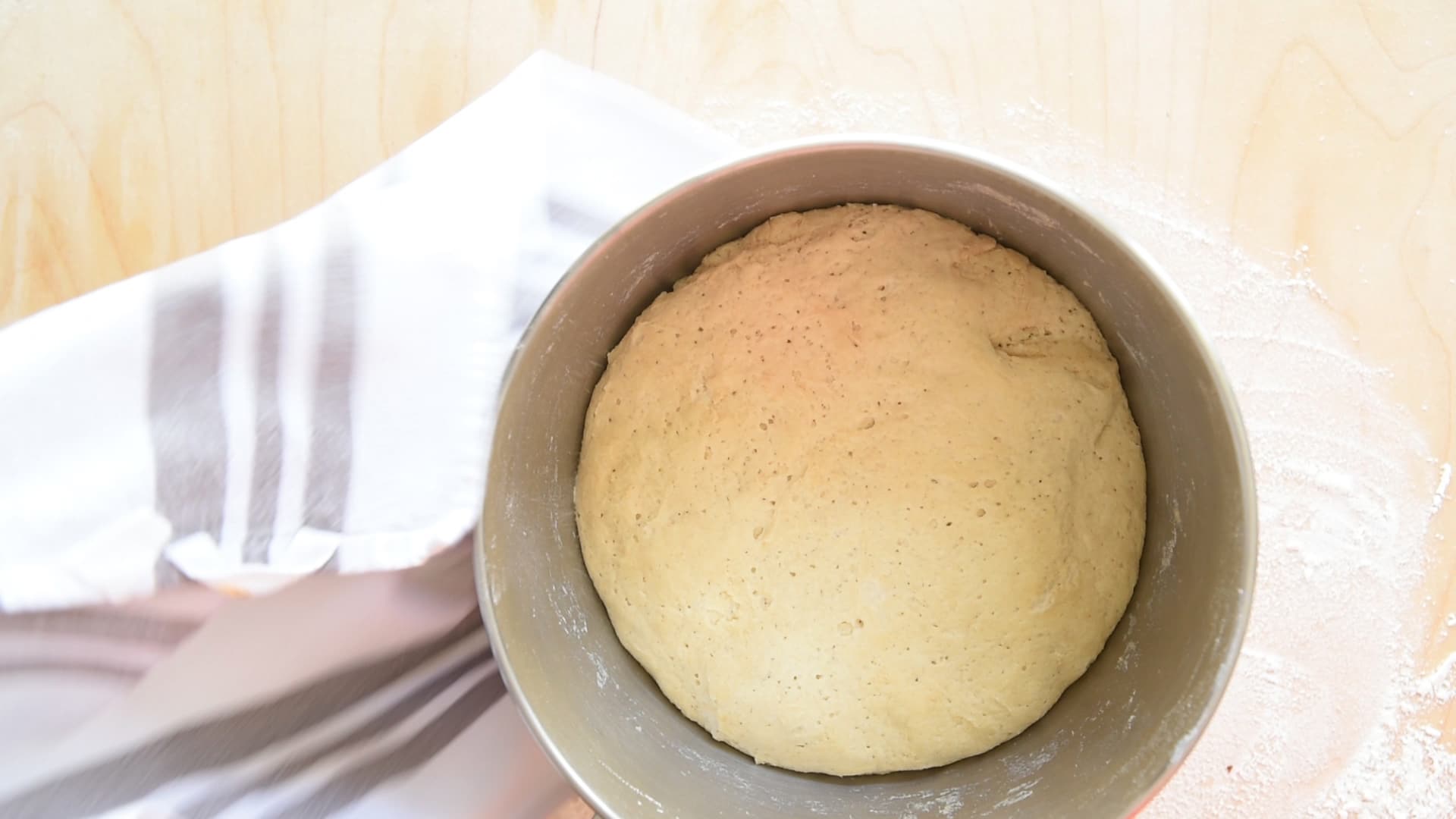
Shaping and Baking Brioche
Shaping brioche dough can be done in various ways, depending on your desired outcome.
- First, you'll need to prepare your loaf pans or baking sheets by greasing them lightly.
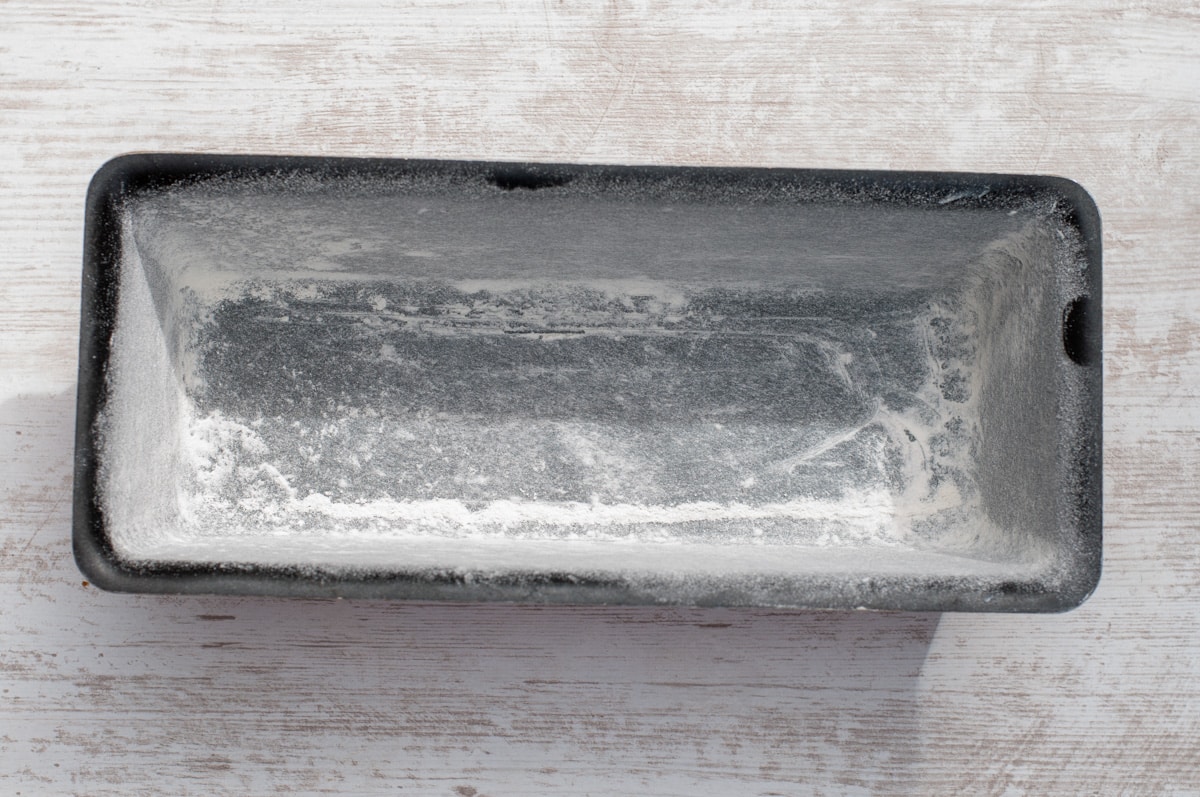
Braided loaf
- For a traditional braided brioche loaf, divide the dough into several equal pieces - usually three or four.
- Roll each piece into a long rope and braid the ropes together.
- Carefully transfer the braided dough to a greased loaf pan, tucking the ends under to create a neat finish.

Rolls
- For brioche rolls, simply divide the dough into equal portions and shape each into a smooth, tight ball.
- Place the dough balls onto the prepared baking sheet, leaving enough space between them for expansion.
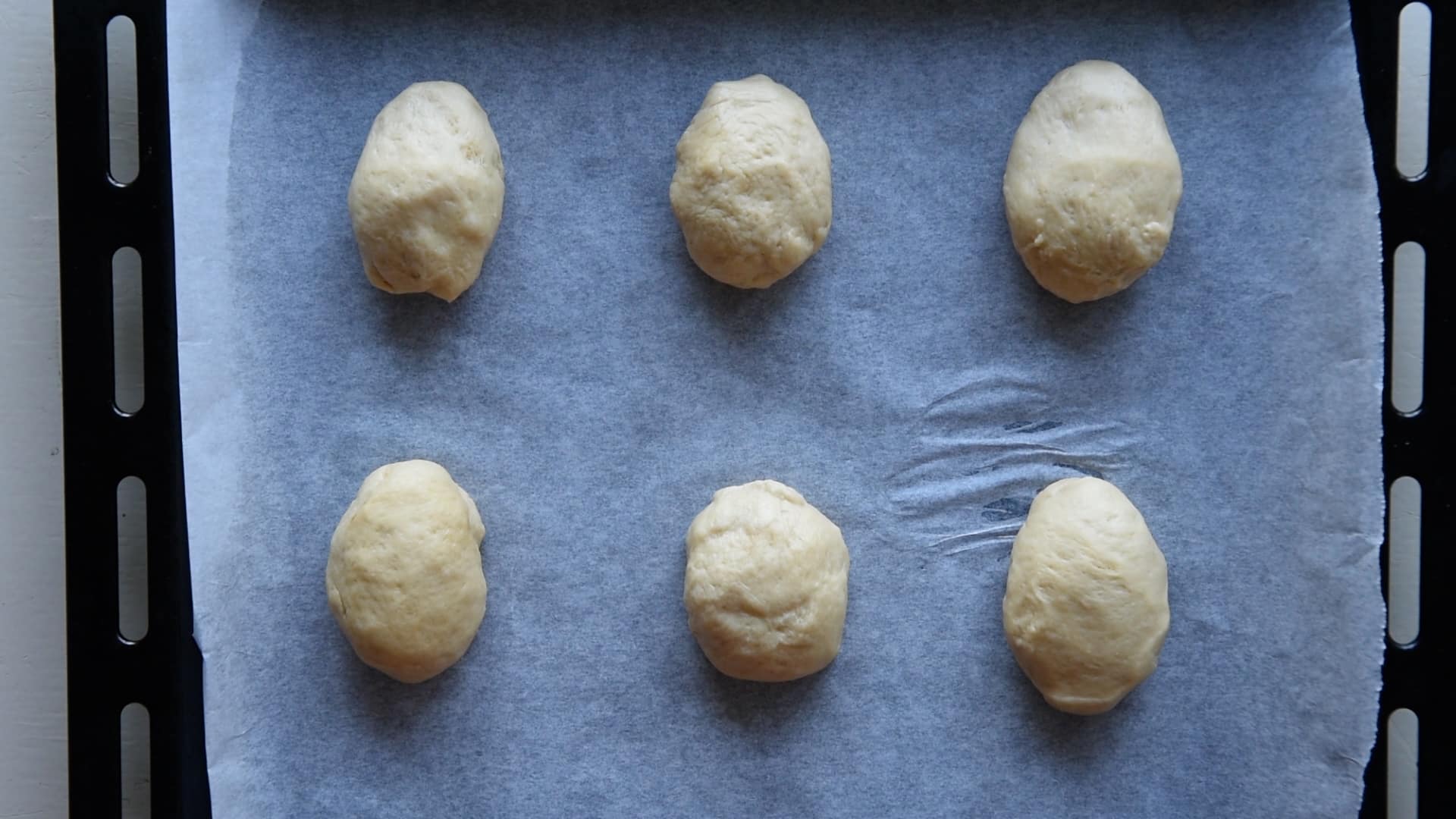
Baking it
- Once you've shaped your brioche dough, cover it loosely with plastic wrap, and allow it to rise until it has nearly doubled in size. This can take anywhere from 1 to 2 hours, depending on the temperature of your kitchen.
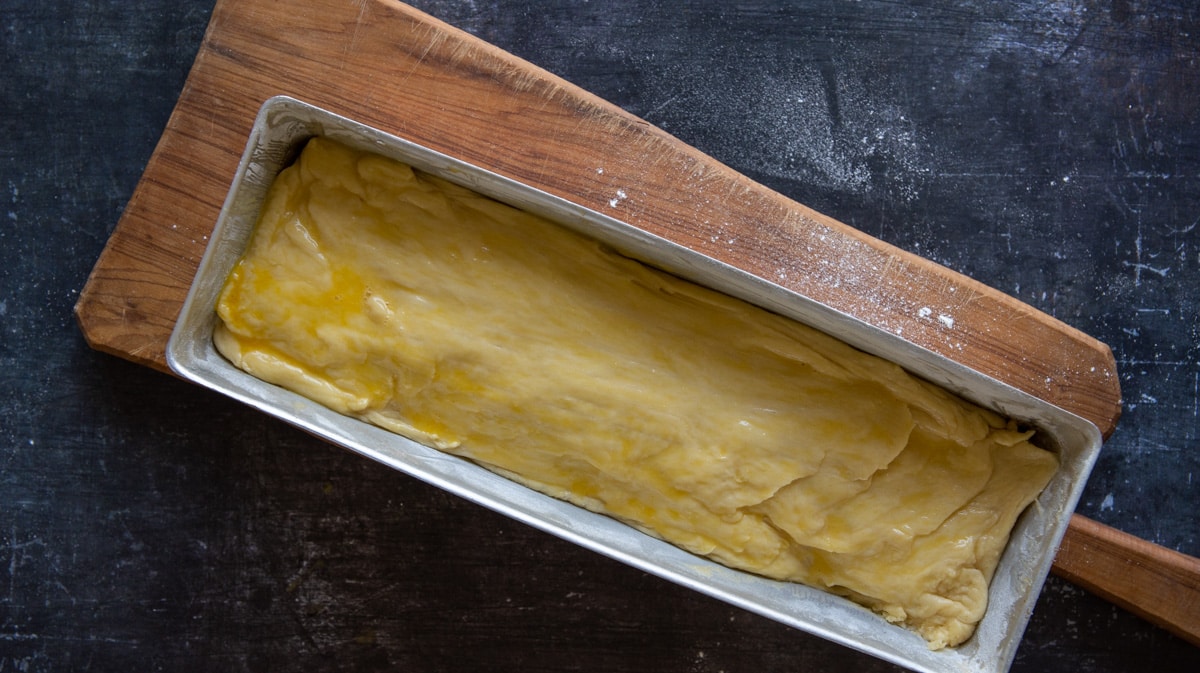
- To ensure a beautiful, golden-brown crust, prepare an egg wash by whisking together one egg with a tablespoon of milk.
- Before placing your brioche in the oven, gently brush the surface of the dough with the egg wash using a pastry brush.
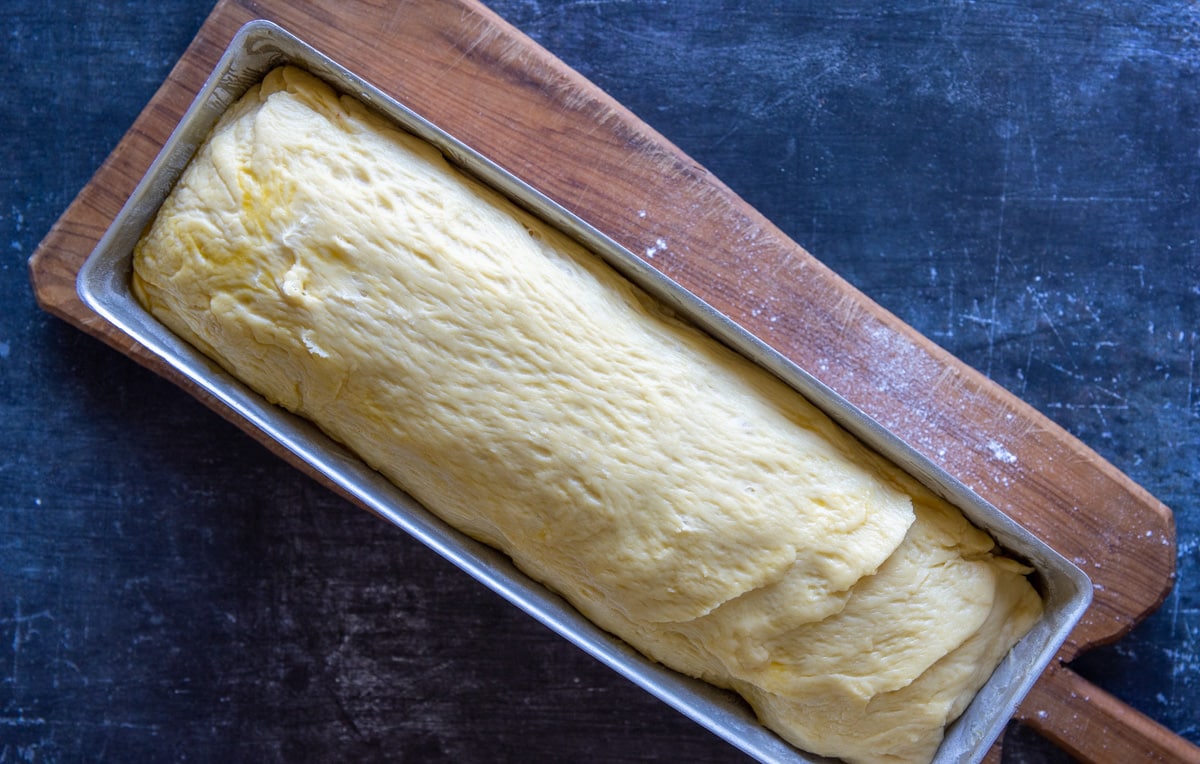
- Preheat your oven to 375°F (190°C) for brioche rolls, or 350°F (175°C) for brioche loaves.
- Brioche buns typically take around 15-20 minutes to bake, while loaves can take anywhere from 25 to 40 minutes, depending on their size.
- To test for doneness, insert a toothpick or skewer into the center of the bread—if it comes out clean, your brioche is ready.
- When your brioche is finished baking, remove it from the oven and let it cool on a wire rack for a few minutes before turning it out of the pan.
Hint: Brioche is best enjoyed fresh, but if you'd like to store it for later, wrap it tightly in plastic wrap or aluminum foil to retain its softness and moisture.
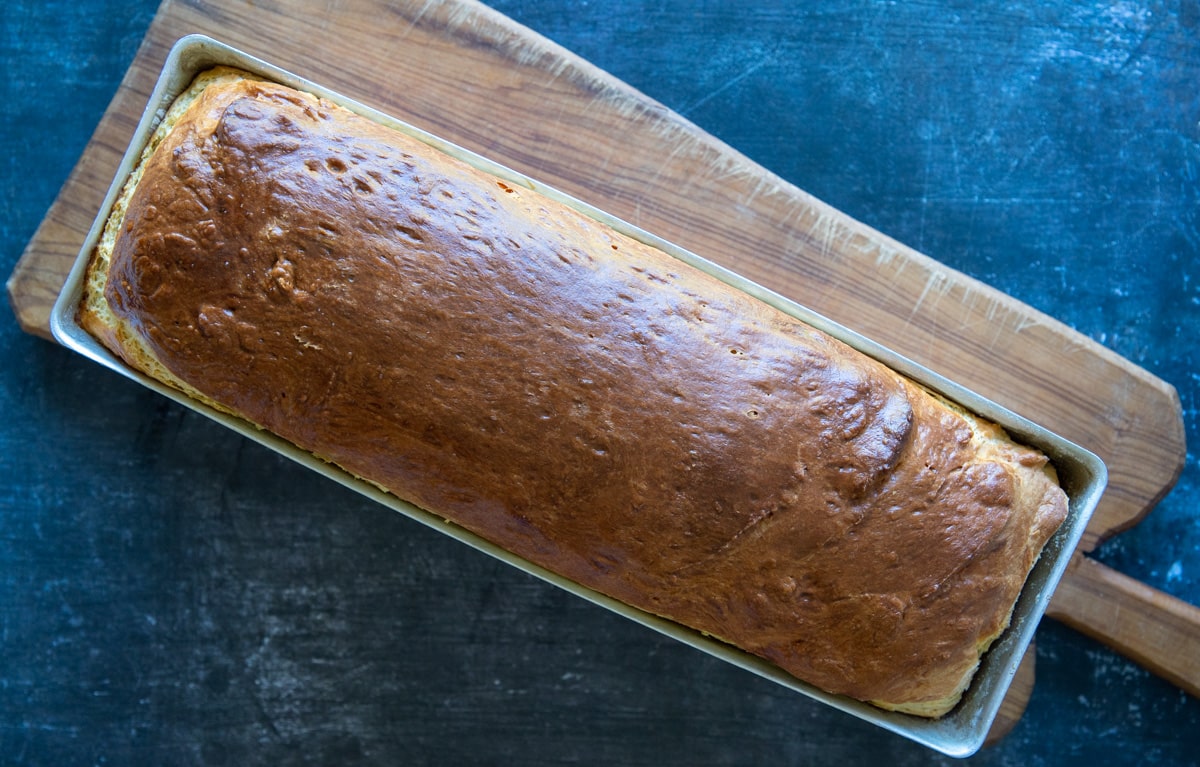
Brioche Variations and Toppings
With this brioche dough recipe, you can create various sweet and savory treats by adding different toppings or altering the recipe slightly.
Brioche's enriched dough sets it apart from lean doughs (pizza and bread), with its higher content of butter and eggs.
This gives the bread its characteristic soft, tender crumb.
Professional pastry chefs often opt for using brioche dough when making tarts or brioches as its taste and texture enhance both sweet and savory dishes.
If you're in the mood for something more traditional, serve brioche toasts with various toppings.
A combination of sweet and savory options can include:
- Butter and fruit preserves
- Cream cheese and smoked salmon
- Goat cheese and honey
- Sliced avocado with a sprinkle of salt and pepper
- Another creative variation is using savory dough for foie gras.
This rich, luxurious filling pairs beautifully with this sweet buttery bread and balsamic fig glaze, creating a unique and indulgent appetizer.
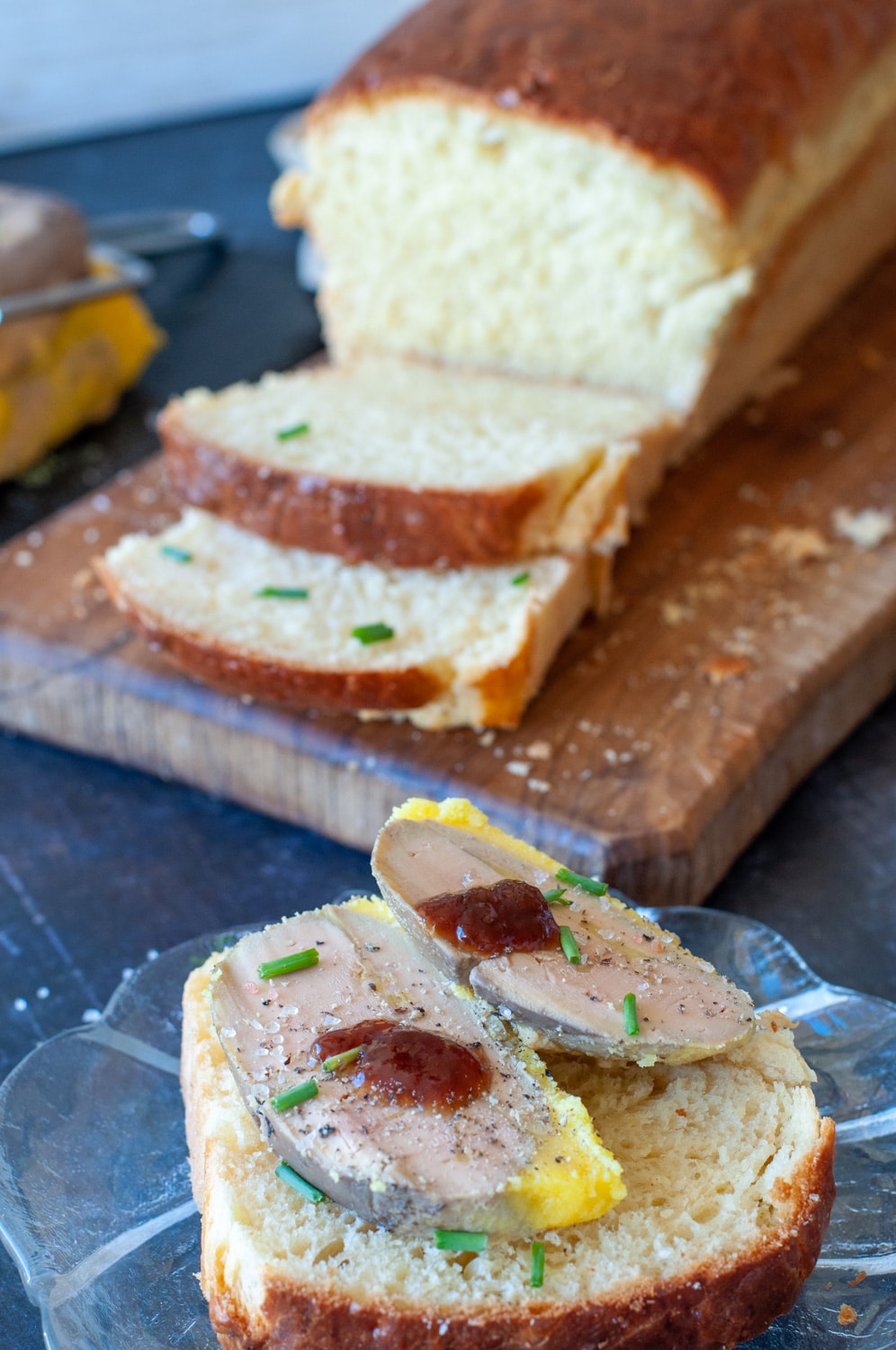
To add elegance, top your brioche loaves with pearl or cinnamon sugar before baking.
The sugar adds a delightful crunch and sweetness, making it a perfect accompaniment to a cup of tea or coffee.
One delicious and popular variation of brioche is French toast.
Simply slice your loaves of brioche bread into thick pieces, and dip them into a mixture of whole milk, eggs, and vanilla.
Cook these slices on a buttered skillet, and serve with a drizzle of maple syrup or a dusting of confectioners' sugar.
For a sweet twist, try making brioche cinnamon rolls.
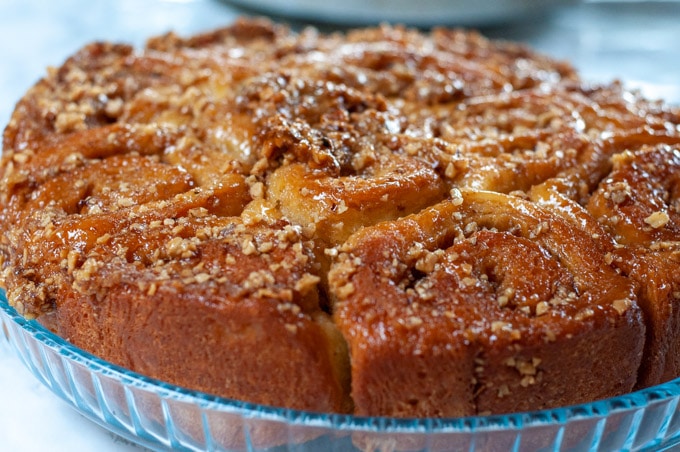
Finally, consider experimenting with different shapes and sizes when baking your brioche.
Miniature loaves or brioche buns can be used as an alternative for English muffins in breakfast sandwiches or served as a delectable side dish for any meal.
In Italy, we fill the brioche roll with whipped cream (Maritozzo in Rome) or ice cream (brioche con Gelato) in Sicily.
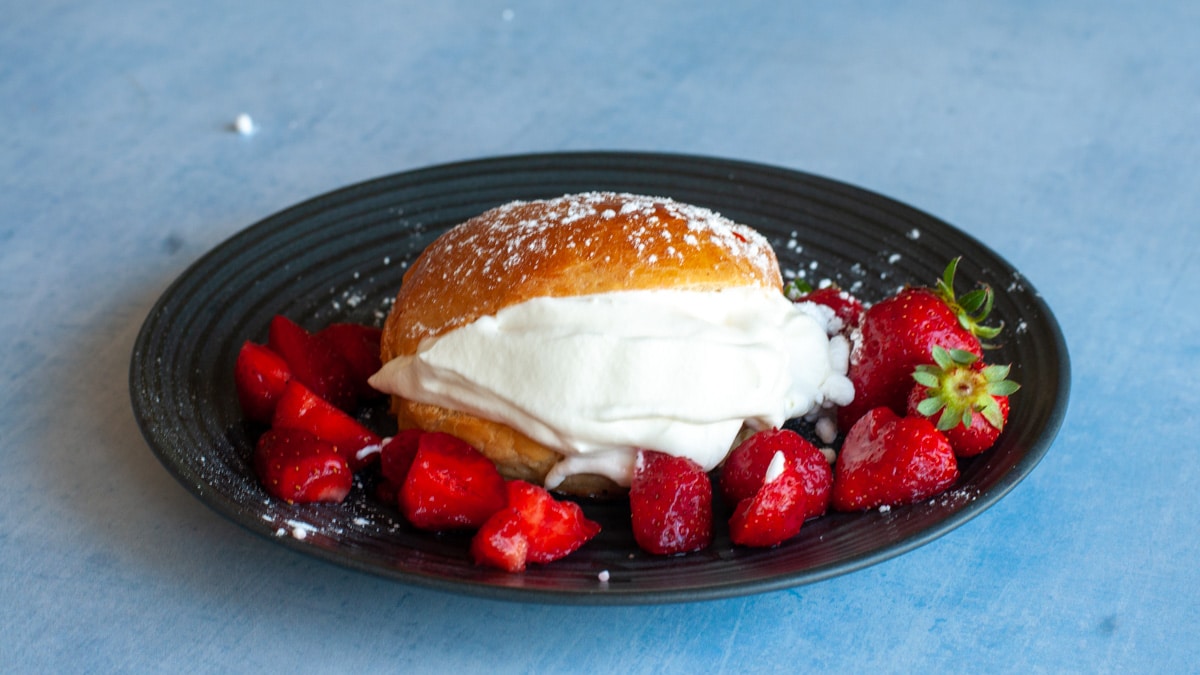
Tips and Tricks
When baking brioche, it's important to have patience and use the right ingredients and techniques to ensure a delicious final product.
Here are some useful tips to help you perfect your brioche baking skills:
- Use large eggs and all purpose flour or type 0. The protein present in both these ingredients will add to the dough's gluten content, allowing it to achieve the desired elasticity and structure.
- Use butter at room temperature for a soft and rich dough.
- Use warm water or milk (about 80°F to 100°F) to activate the yeast, ensuring proper fermentation and dough rise.
- Add granulated sugar to the warm liquid when activating the yeast to give it enough food for fermentation.
- While kneading the dough, be patient and perform the windowpane test to check if it's properly developed. The test involves stretching a small piece of dough until it becomes thin and translucent. If it tears easily, continue kneading until it passes the test.
- If you're using a bread machine, follow the manufacturer's instructions to achieve optimal results. Make sure to also adjust the settings for different types of brioche based on their varying sweetness and richness levels.
- You can add an extra egg yolk to the dough to increase richness and tenderness. The yolk imparts an irresistible yellow color and a slight custard-like flavor to the brioche dough.
- Adding extra salt to balance the sweetness can enhance the flavor profile of your brioche. Similarly, incorporating savory elements like cheese, herbs, or cured meats can create a delightful contrast to the inherent sweetness.
- Consider making various shapes to add visual appeal to your brioche. Experiment with braids, knots, or rolls, as they look eye-catching and allow for individual servings that are perfect for sharing with family.
- Refrigerating the dough overnight is another great trick to facilitate proper gluten development and heighten the sweet bread's flavor.
- Make sure to allow the dough to rest and come to room temperature before shaping it, as this will make it easier to handle.
- Finally, don't be afraid to get creative with your brioche. From incorporating chocolate chips, lemon zest, or dried fruits to using dairy substitutes, there are endless possibilities to customize this versatile bread to suit your unique taste preferences.
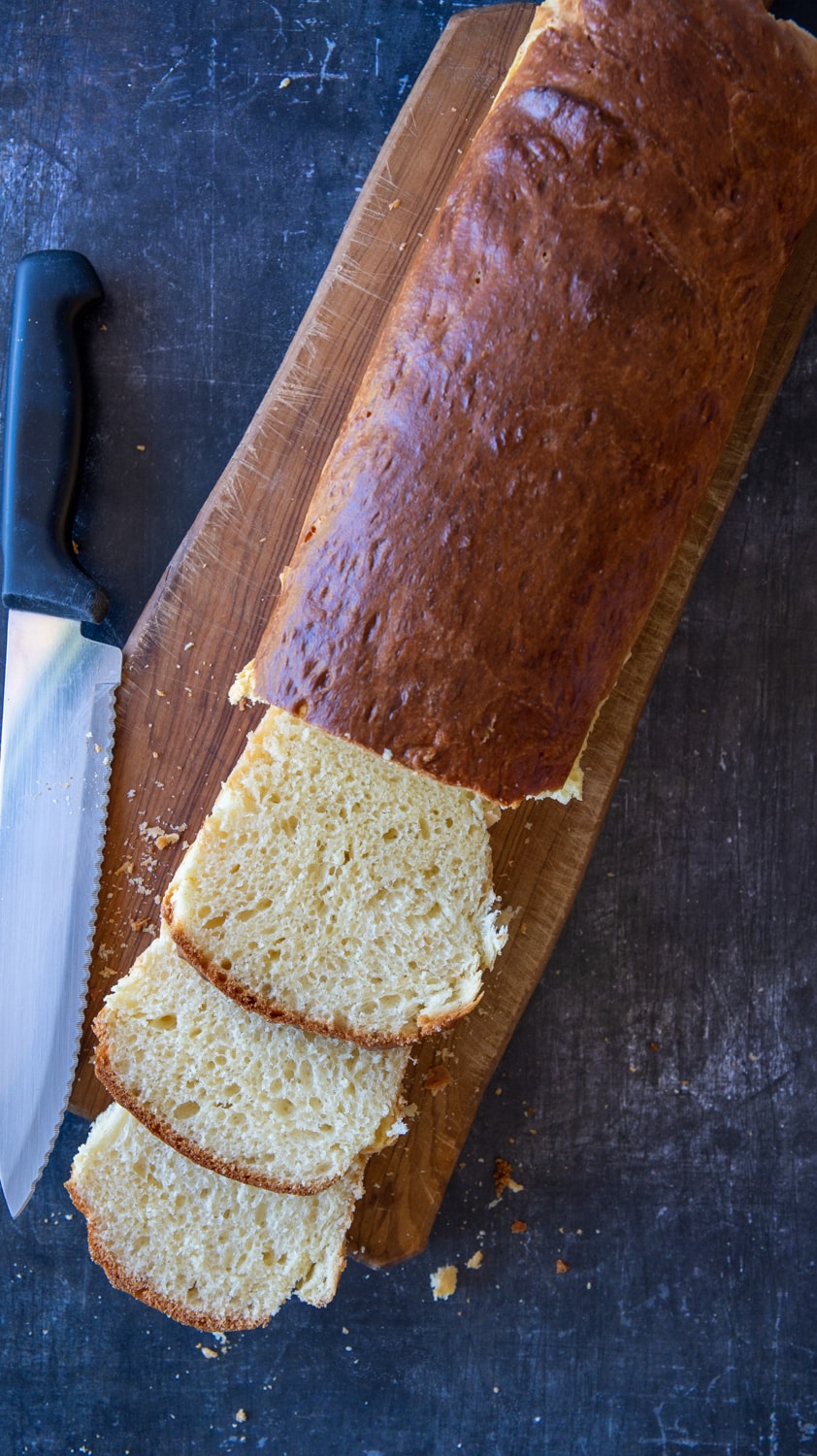
Recipes you can make with the brioche dough
Here are some of the recipes you can make using this method, just adjust your ingredients according to the recipe measurements:
If you are making brioche dough from scratch, leave your comment below I would like to know which one is your favourite. You can find more delicious ideas if you FOLLOW ME on Facebook, YouTube, or sign up to my newsletter.
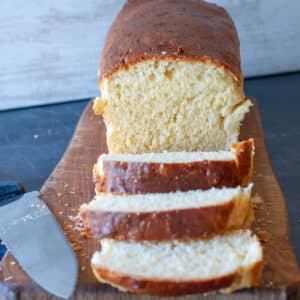
📋How To Make Brioche Dough At Home
Ingredients
Brioche
- 1 ⅛ cup lukewarm Milk or 1 cup - 230 ml of water + 3 tablespoon of dry milk
- 2 fresh eggs
- ⅔ cup melted butter
- 4 cup flour
- 1.5 teaspoon salt
- 1 tablespoon caster sugar
- 1 pkg yeast 2 tsp
Egg wash
- 1 egg
- 3 tablespoon milk
Instructions
Activate the yeast
- To activate the yeast mix the Dry Active Yeast with ¼ cup of the water needed for the recipe. The water should be lukewarm.1 pkg yeast
- You can also add ½ teaspoon of sugar, and let it rest until it becomes foamy.1 tablespoon caster sugar
Combine the wet ingredients
- Combine all the wet ingredients together: milk, butter, eggs and the frosty yeast.1 ⅛ cup lukewarm Milk, 2 fresh eggs, ⅔ cup melted butter
Combine the dry ingredients
- Strain the flour along with the sugar and the salt into a bowl, ensuring they are completely mixed.4 cup flour, 1.5 teaspoon salt
Making the dough with an electric mixer
- Once they are thoroughly mixed, you can either continue mixing the flour with your hands or put it into an electric mixer with a dough hook.
- Mix it until the dough becomes a ball that comes away easily from the side of the bowl.
Making the dough by hand
- Pour the dry ingredients in a flat surface and make a ‘well’ in the centre of the flour mix.
- Slowly pour the wet ingredients in the ‘well’ of the flour and mix it with the wet ingredients gradually, using your fingers.
- Knead the dough until it is smooth and compact.
Fermentation and Proofing
- Cover your brioche dough in a greased bowl with a clean towel or plastic wrap.
- Allow the dough to rise in a warm place, typically around 75-80°F (24-27°C), to ensure optimal yeast activity.
- This first rise, known as the first proof, can take anywhere from 1 to 2 hours, depending on the specific recipe and climate.
- Once the dough has roughly doubled in size during the first proof, you can proceed with shaping it according to your desired form
Proofing overnight
- Some bakers recommend an overnight proof in the refrigerator while others prefer a shorter proof at room temperature.
Shaping and Baking Brioche
- First, you'll need to prepare your loaf pans or baking sheets by greasing them lightly.
Braided loaf
- For a traditional braided brioche loaf, divide the dough into several equal pieces - usually three or four.
- Roll each piece into a long rope and braid the ropes together.
- Carefully transfer the braided dough to a greased loaf pan, tucking the ends under to create a neat finish.
Rolls
- For brioche rolls, simply divide the dough into equal portions and shape each into a smooth, tight ball.
- Place the dough balls onto the prepared baking sheet, leaving enough space between them for expansion.
Baking it
- Once you've shaped your brioche dough, cover it loosely with plastic wrap, and allow it to rise until it has nearly doubled in size. This can take anywhere from 1 to 2 hours, depending on the temperature of your kitchen.
- To ensure a beautiful, golden-brown crust, prepare an egg wash by whisking together one egg with a tablespoon of milk.1 egg, 3 tablespoon milk
- Before placing your brioche in the oven, gently brush the surface of the dough with the egg wash using a pastry brush.
- Preheat your oven to 375°F (190°C) for brioche rolls, or 350°F (175°C) for brioche loaves.
- Brioche buns typically take around 15-20 minutes to bake, while loaves can take anywhere from 25 to 40 minutes, depending on their size.
- To test for doneness, insert a toothpick or skewer into the center of the bread—if it comes out clean, your brioche is ready.
- When your brioche is finished baking, remove it from the oven and let it cool on a wire rack for a few minutes before turning it out of the pan.
Video
Notes
-
Tips and Tricks
When baking brioche, it's important to have patience and use the right ingredients and techniques to ensure a delicious final product. Here are some useful tips to help you perfect your brioche baking skills: - Use large eggs and all purpose flour or type 0. The protein present in both these ingredients will add to the dough's gluten content, allowing it to achieve the desired elasticity and structure.
- Use butter at room temperature for a soft and rich dough.
- Use warm water or milk (about 80°F to 100°F) to activate the yeast, ensuring proper fermentation and dough rise.
- Add granulated sugar to the warm liquid when activating the yeast to give it enough food for fermentation.
- While kneading the dough, be patient and perform the windowpane test to check if it's properly developed. The test involves stretching a small piece of dough until it becomes thin and translucent. If it tears easily, continue kneading until it passes the test.
- If you're using a bread machine, follow the manufacturer's instructions to achieve optimal results. Make sure to also adjust the settings for different types of brioche based on their varying sweetness and richness levels.
- You can add an extra egg yolk to the dough to increase richness and tenderness. The yolk imparts an irresistible yellow color and a slight custard-like flavor to the brioche dough.
- Adding extra salt to balance the sweetness can enhance the flavor profile of your brioche. Similarly, incorporating savory elements like cheese, herbs, or cured meats can create a delightful contrast to the inherent sweetness.
- Consider making various shapes to add visual appeal to your brioche. Experiment with braids, knots, or rolls, as they look eye-catching and allow for individual servings that are perfect for sharing with family.
- Refrigerating the dough overnight is another great trick to facilitate proper gluten development and heighten the sweet bread's flavor.
- Make sure to allow the dough to rest and come to room temperature before shaping it, as this will make it easier to handle.
- Finally, don't be afraid to get creative with your brioche. From incorporating chocolate chips, lemon zest, or dried fruits to using dairy substitutes, there are endless possibilities to customize this versatile bread to suit your unique taste preferences.
Nutrition
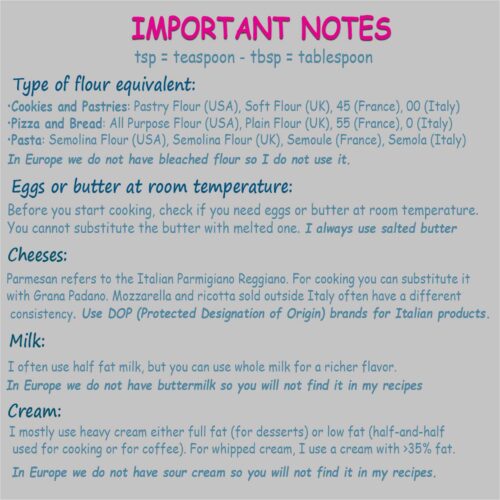

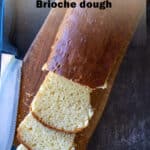


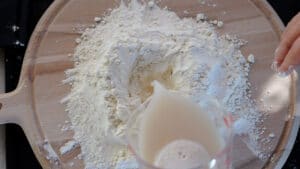
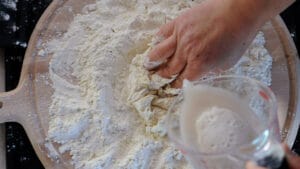
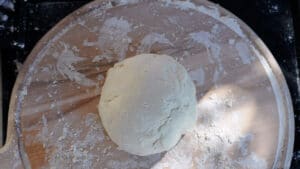
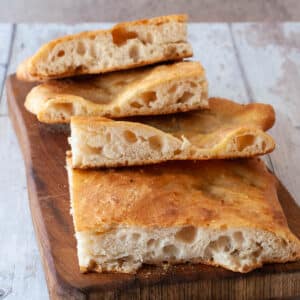
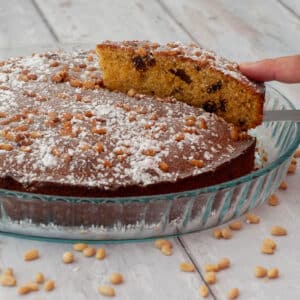
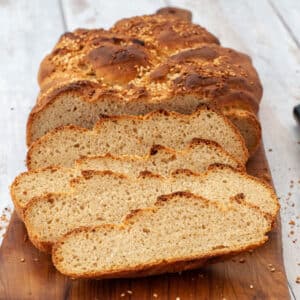

Mary Lou Boni
Can u print recipe in English. Don't know how to measure in grams. Thankyou
Laura
Mary, I added the imperial measurements for you. You can also download the conversion chart if you sign up on the newsletter or find the charts on the link provided over the recipe template